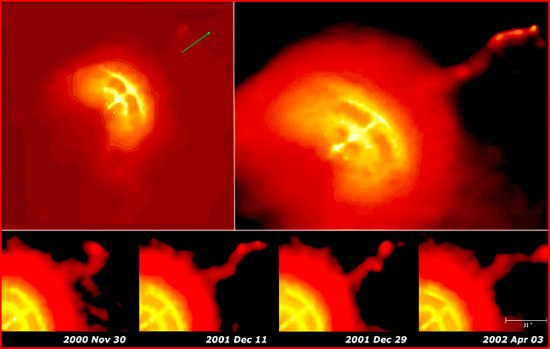
Nov 14, 2019
Neutron stars cannot exist.
“The sky was clear—remarkably clear—and the twinkling of all the stars seemed to be but throbs of one body, timed by a common pulse.”
—Thomas Hardy
On June 13, 2012 NASA launched the Nuclear Spectroscopic Telescope Array (NuSTAR) on a mission to study X-rays in what are thought to be the remnants of supernova explosions, called pulsars. NuStar joins other X-ray space telescopes like Chandra and XMM-Newton, except that it is capable of focusing X-rays to a sharp point, enabling it to “see” energies up to 79,000 electron-volts. That capability makes it more than 100 times more powerful than the other observatories.
Pulsars are often reported to be “lighthouses” in space, with rotating beams concentrated at specific points on their surfaces. Gravitational theory relies on a rotational mechanism for their pulsations, so when the spin of a pulsar brings its beam in line with telescopes on Earth, a flash of light is visible.
Pulsars are said to be neutron stars with magnetic fields measuring over 10^15 Gauss. For comparison, Earth’s magnetic field is about one-half Gauss. It must be stressed, though, that no neutron star has ever been observed. Since the magnetic fields pulse in fractions of a second, and it is well-established that magnetic fields are induced by electric currents, there must be electricity generating the intense fields in a pulsar.
However, as mentioned, the rotation rates of some pulsars are faster than once every second. Nothing can withstand the forces involved with those spin rates, so “neutron stars” were mathematically created. Only something so dense was thought able to withstand the rotational velocity.
For example, the Crab Nebula pulses at 30 times per second, or 30 hertz. That means the star is theoretically rotating 30 times per second. There are pulsars with frequencies as high as 716 hertz, as well. In an Electric Universe, the regular frequency is not mechanically generated. Instead, it is the capacitive, resistive, and inductive electrical environment around a star that generates oscillations.
Recently, astrophysicists from the University of Cagliari, Italy, used the NuSTAR telescope to observe IGR J17591−2342, an X-ray source spinning at 527.4 Hertz (1.9 milliseconds).
Picture of the Day articles address the problem of neutron stars; considering them to be imaginary objects. Gravity-only cosmology makes neutron star theory necessary, because gravity has endless powers in the consensus view. However, compacted matter and extreme rotation are not necessary. Electricity traveling through circuits provides a coherent explanation that is consistent with commonly accepted electromagnetic theories, as well as with laboratory experiments.
Pulsar oscillations are caused by resonant effects in those electric circuits. A release of stored electrical energy in a “double layer” is responsible for their energetic outbursts. Pulsars often shine in X-ray and gamma-ray light. The outbursts begin with a sudden peak of energy, and then gradually decline, like a stroke of lightning. It seems more likely that an immense concentration of electricity being focused by some kind of “plasma gun” effect is driving pulsar behavior.
Stephen Smith
The Thunderbolts Picture of the Day is generously supported by the Mainwaring Archive Foundation.












